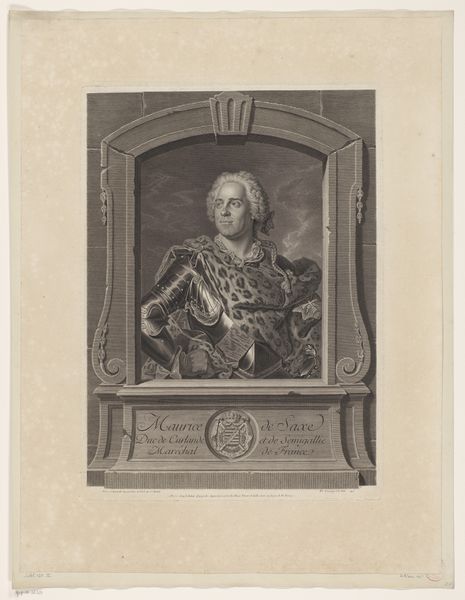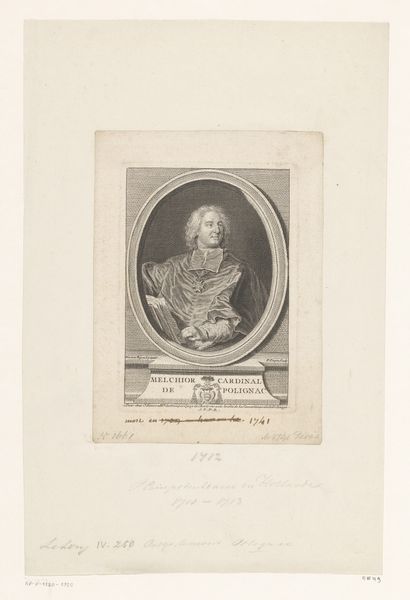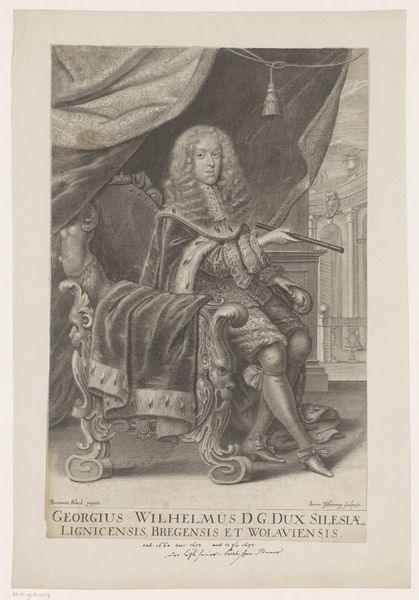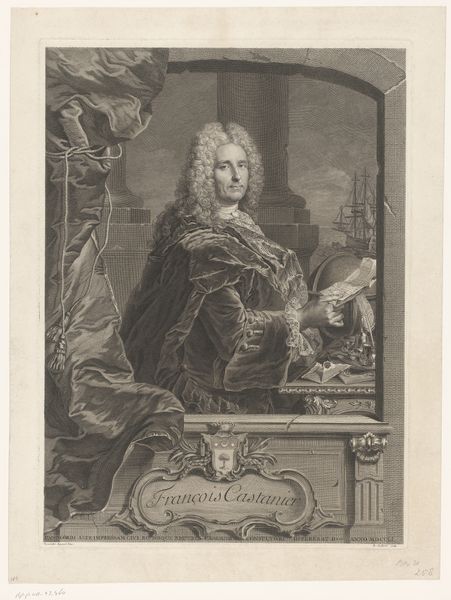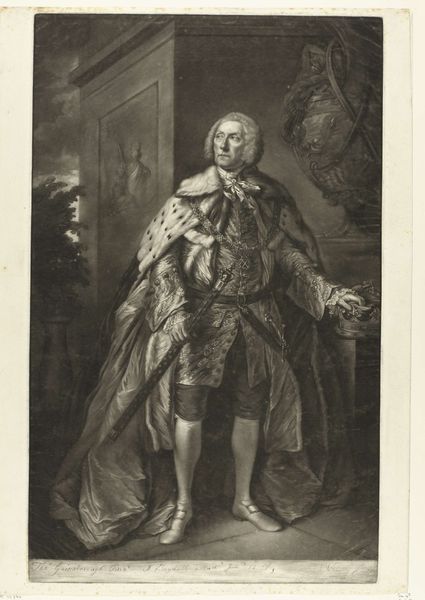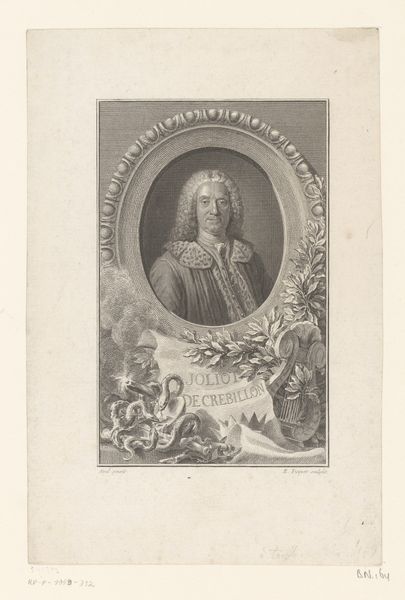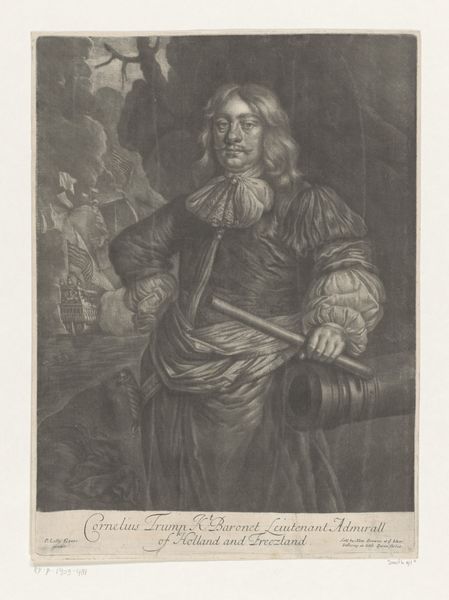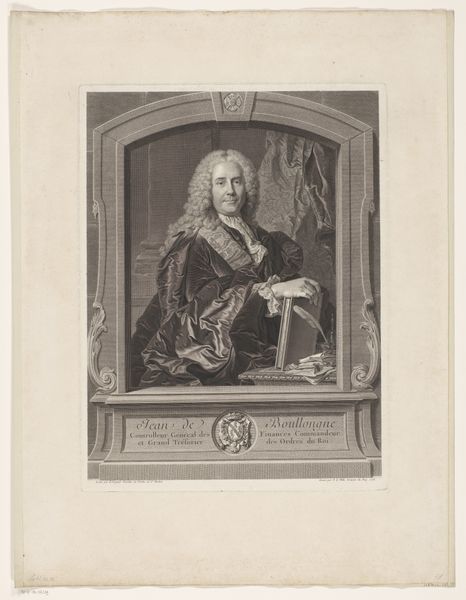
print, engraving
#
portrait
#
baroque
# print
#
old engraving style
#
history-painting
#
engraving
Dimensions: height 352 mm, width 250 mm
Copyright: Rijks Museum: Open Domain
Curator: This portrait immediately strikes me as refined, possessing a melancholic grandeur despite the somewhat subdued monochrome palette. Editor: Indeed. What we’re looking at is an engraving, “Portret van Willem IV, stadhouder en prins van Oranje-Nassau,” made around 1735 by John Faber II. Curator: Engraving...so the lines, the gradations in tone—all painstakingly etched. It’s a medium perfectly suited to the depiction of controlled power and wealth. Notice the almost obsessive detail given to the wig and the rendering of fabric. Editor: That obsessive detail speaks volumes, doesn't it? Consider the artisan labor involved. This isn't just about Willem IV; it’s a product of skilled labor made explicitly to represent power but reliant upon a network of individuals, workshops, trade. We’re seeing the end result of specific means of production in 18th century Europe. Curator: Agreed. But within the work itself, look at how the composition focuses on Willem's gaze, averted yet confident. His hand casually grasps a baton – symbol of authority. Faber draws our eyes through compositional elements, culminating at Willem's composed expression and that tiny glint in his eye. Editor: And while his eye might glint, it’s interesting that engraving itself allowed for a democratizing effect. These images would have circulated, becoming objects of exchange and therefore shaping public perception beyond aristocratic circles, making Willem's image reproducible, consumable. Curator: True, but to circle back to the composition, notice the symmetry established, from the figure itself through the coats of arms…these motifs elevate Willem from mortal man into a figure of historical permanence, regardless of who's doing the viewing. Editor: Precisely. A material object imbued with carefully manufactured social value and intended circulation, ultimately intertwined with socio-economic frameworks of its time. Curator: Well, it’s certainly prompted us both to consider multiple angles in interpreting its image. Editor: Yes, seeing it as an item born out of complex material processes certainly informs one’s view of the final aesthetic result.
Comments
No comments
Be the first to comment and join the conversation on the ultimate creative platform.


